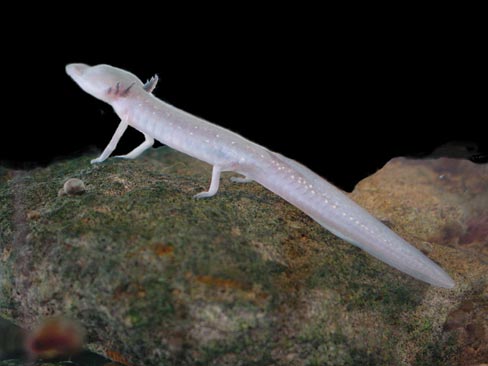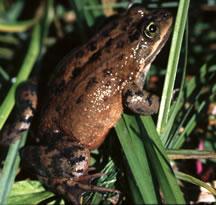 At least 200 species of amphibians have become extinct in the last 30 years, and a full one-third of those remaining may soon follow. Despite rising concerns here in the USA, and the existence of a long-established law (the Endangered Species Act) that protects animals in peril, 12 native frogs, toads and salamanders remain neglected and in immediate need of protection.
At least 200 species of amphibians have become extinct in the last 30 years, and a full one-third of those remaining may soon follow. Despite rising concerns here in the USA, and the existence of a long-established law (the Endangered Species Act) that protects animals in peril, 12 native frogs, toads and salamanders remain neglected and in immediate need of protection.
A Crisis Situation for Many Species
According to the standards set by the US Fish and Wildlife Service, all 12 species qualify for protection under the Endangered Species Act. However, a recent update released by the Center for Biological Diversity revealed the shocking fact that, for reasons that are not entirely clear (or, I’m sure, reasonable!), these rare amphibians remain on the Endangered Species Act “Candidates List” – unprotected and edging ever closer to extinction.
The seriousness of this situation is made very clear by the fact that 42 other species have gone extinct during the time that the 12 amphibians have languished on the “Candidates List”! In total, an astonishing 252 animals and plants have been included on this list but are yet to be granted protection under the Endangered Species Act…certainly there are others waiting to be documented.
Amphibians Ready and Waiting for Protection
 The amphibians currently known to be in need of protection are as follows:
The amphibians currently known to be in need of protection are as follows:
Frogs and Toads
Arizona Treefrog, Colorado Spotted Frog, Oregon Spotted Frog, Mountain Yellow-Legged Frog, Yosemite Toad, Relict Leopard Frog
Salamanders
Black Warrior Mudpuppy, Austin Blind Salamander, Jollyville Plateau Salamander, Salado Salamander, Ozark Hellbender, Georgetown Salamander
Further Reading
You can learn how to register your opinion on this and other conservation emergencies on the Center for Biological Diversity Website.
Annually, over 300,000 people swim in Barton Spring, the only known habitat of the Austin Blind Salamander; more on this unique conservation challenge here.
 That Reptile Blog – Reptile, Amphibian and Exotic Pet Care and Information
That Reptile Blog – Reptile, Amphibian and Exotic Pet Care and Information



Dear Frank,
Thanks so much for keeping us updated . This was a great article.
Hi Lorri,
Much appreciated! I hope you and all are fine, Frank